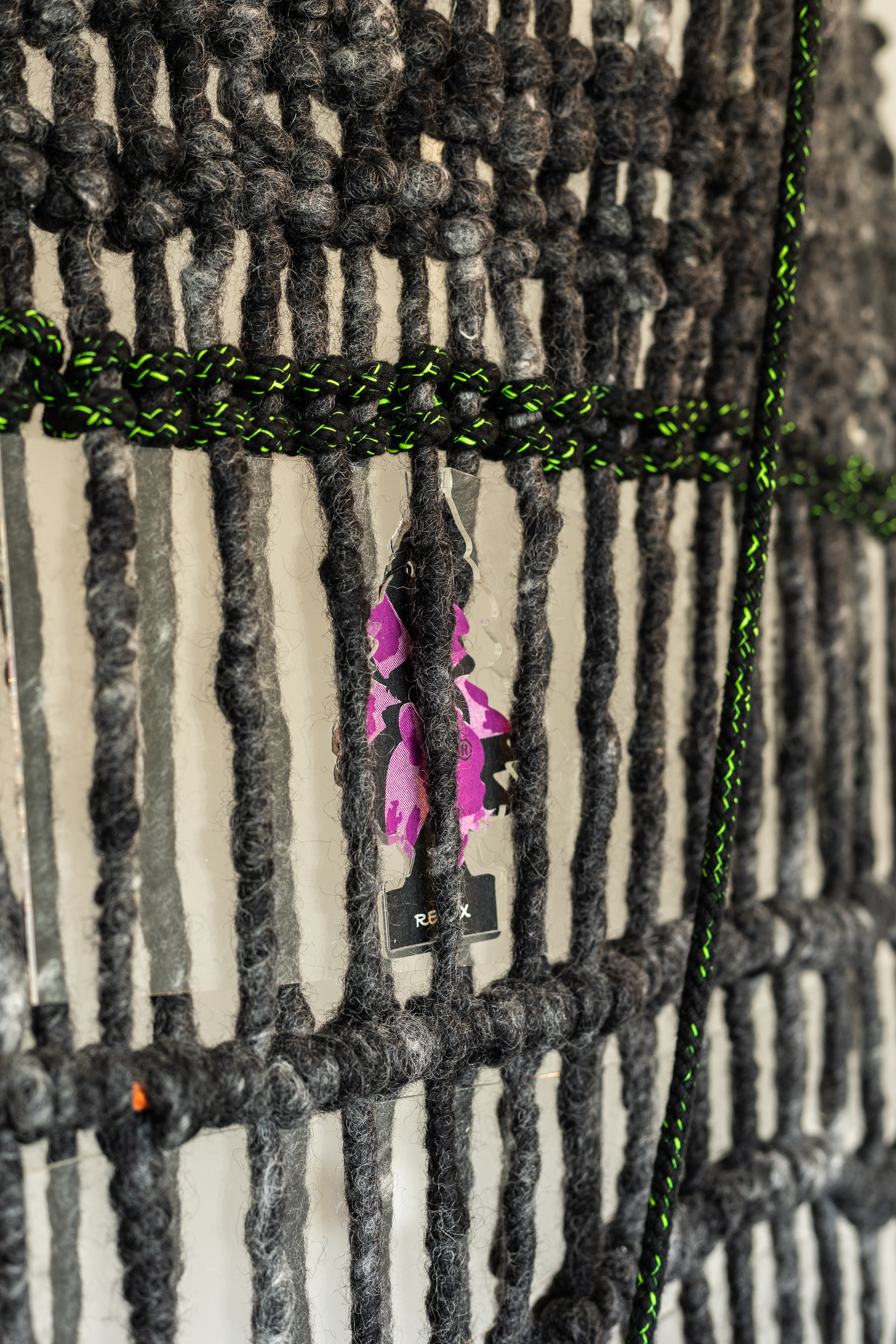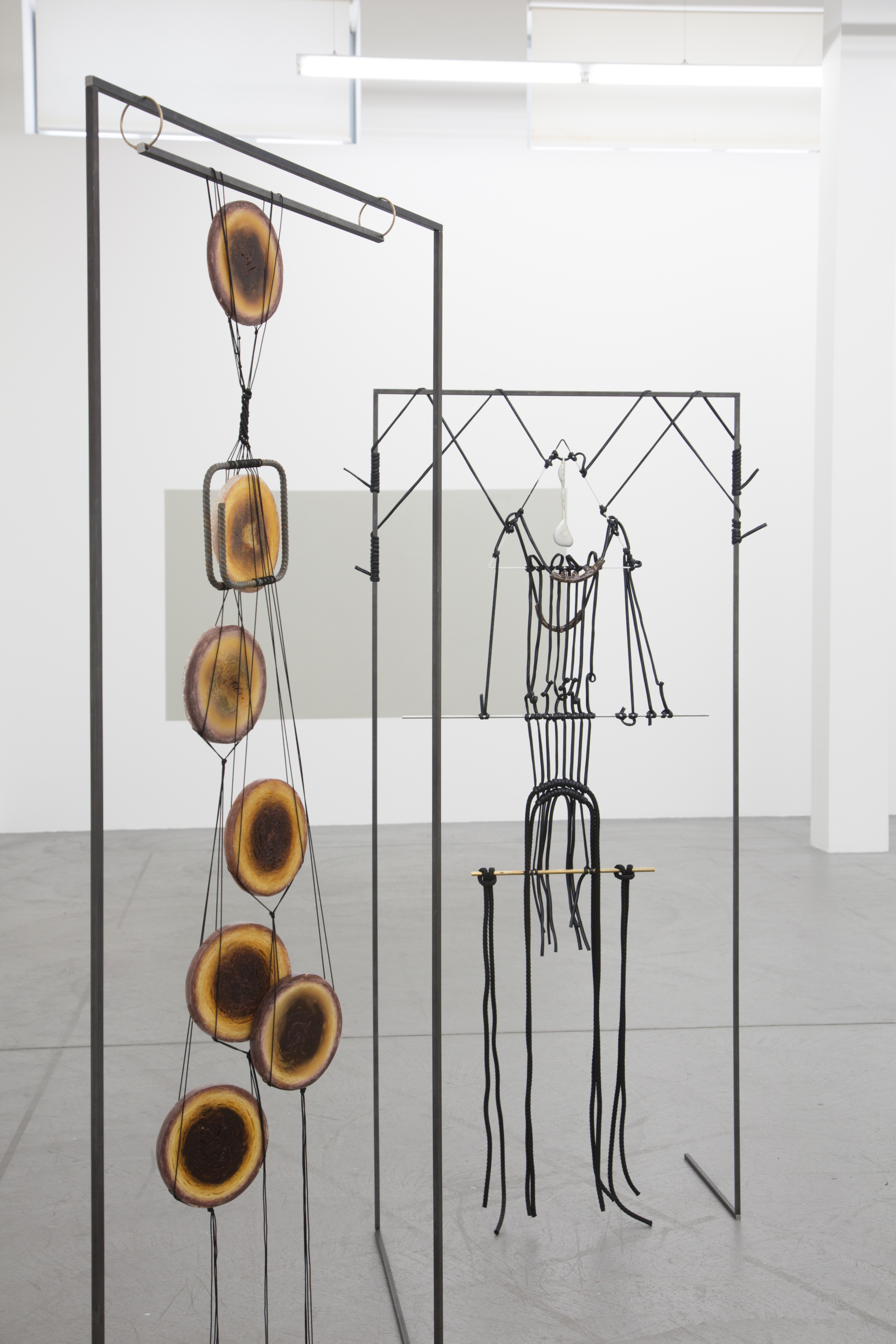M
A
N
A
M
MANA, 2022
video installation
text by Chus Martinez
FOR THE LOVE OF THE WATER
Lisa Biedlingmaier’s works deal with both the Ocean and love. For centuries we have been trained to think about the Ocean and about the climate without emotions. Or, better said, those who had emotions about nature could be poets, or, if people without artistic skills, then just mentally weak. It has been a hard journey to create the conditions to reflect and feel differently about nature, about emotions, about the bonds that unite life. And, those who created such conditions have been the artists. It may not be obvious to us and yet, for centuries, experimenting with emotions, expression and experience has created a ground to connect entities that were, otherwise, worlds apart. But also not even art itself was keen on adopting the world of sensing. Form, first, and conceptualism, later, were created to discipline art, to control the impulse to transform the whole logic of the world into the logic of love.
In her latest work — a beautiful and mesmerizing video work — Lisa Biedlingmaier unites her unique sculpture work with the Ocean. I have been always dreaming on the possibility of the Ocean becoming an art space. It is not easy to realize this idea without becoming kitsch, since it is not about „using“ the Ocean but about superposing functions that were traditionally culture in a new form of nature that surpasses all the traditional binaries. In this manner, this work superposes two worlds in a merge that is quite magic. It is somehow, as if the Ocean was dreaming of hosting art. Humans always address their dreams about the Ocean, its calmness, its beauty, we refer to nature addressing our own dreams. However, imagining the Ocean hosting the practice of art, means imagining a love and an agency that is different from the human one. The Ocean loving art could be similar as imagining the Ocean finding ways of thinking differently about itself as a vessel. Even in the most sophisticated thinking about the Ocean, we tend to see water as contained by Earth and containing both resources and life we could use for our purposes. The radical move of imagining art as desired by the Ocean means that we give the Ocean the opportunity of freeing itself from those human images. The seas loving art are the seas seeing and enjoying itself. An art-Ocean is an emancipated space capable of dreaming in its own terms about its future, its elements, its own thinking. Linking the Ocean with the forests, connecting the roots with the currents, creating a light that can see life under the care of love.
Linda Jensen (Last Tango):
Lisa Biedlingmaier has long been concerned with bodily, psychic, and political subjects, be it the sub/conscious, belonging, love, death, and spirituality.
At the very end of the room is Lisa Biedlingmaier’s video work MANA (2022). The title refers to the Hawaiian name of life force and is an energy healing code. We enter a mystical sea underworld, full of light and movement, and replete with macramé things. Often considered to be a treacherous place, this sea floor is peaceful and poetic. Filmed in a cenote (a natural deep-water well) in Yucatan in Mexico, these sites were once considered to be portals to the Mayan underworld. Biedlingmaier plays with our perception. The viewer might perceive the inanimate objects as living creatures. (A phenomena called Pareidolia.) This special turn of mind transforms sailing rope macramé into seahorses. Or one might consider the formations to be ancient artefacts. Their graceful gravitational dance and shapes trigger connections to the archaic, perhaps to a collective shared memory. Psychologically and mythically, water is the most common symbol for the unconscious mind. It is the realm of feelings, dreams and creation. The artist invites the viewer to delve within. It is a consideration on love, one beyond a tunnel-vision perspective and one that celebrates intricacy, tolerance and sentience.
with the kind support of ProHelvetia
installation image: BAK, Guadalupe Ruiz, 2022
camera: Valentina Cucchiara
editing: Matthias Scharfi
sound: Moritz Finkbeiner
vocals: ArMahRanthA AURUM
story: ArMahRanthA AURUM
Linda Jensen (Last Tango):
Lisa Biedlingmaier has long been concerned with bodily, psychic, and political subjects, be it the sub/conscious, belonging, love, death, and spirituality.Linda Jensen (Last Tango):
Lisa Biedlingmaier has long been concerned with bodily, psychic, and political subjects, be it the sub/conscious, belonging, love, death, and spirituality.
At the very end of the room is Lisa Biedlingmaier’s video work MANA (2022). The title refers to the Hawaiian name of life force and is an energy healing code. We enter a mystical sea underworld, full of light and movement, and replete with macramé things. Often considered to be a treacherous place, this sea floor is peaceful and poetic. Filmed in a cenote (a natural deep-water well) in Yucatan in Mexico, these sites were once considered to be portals to the Mayan underworld. Biedlingmaier plays with our perception. The viewer might perceive the inanimate objects as living creatures. (A phenomena called Pareidolia.) This special turn of mind transforms sailing rope macramé into seahorses. Or one might consider the formations to be ancient artefacts. Their graceful gravitational dance and shapes trigger connections to the archaic, perhaps to a collective shared memory. Psychologically and mythically, water is the most common symbol for the unconscious mind. It is the realm of feelings, dreams and creation. The artist invites the viewer to delve within. It is a consideration on love, one beyond a tunnel-vision perspective and one that celebrates intricacy, tolerance and sentience.
At the very end of the room is Lisa Biedlingmaier’s video work MANA (2022). The title refers to the Hawaiian name of life force and is an energy healing code. We enter a mystical sea underworld, full of light and movement, and replete with macramé things. Often considered to be a treacherous place, this sea floor is peaceful and poetic. Filmed in a cenote (a natural deep-water well) in Yucatan in Mexico, these sites were once considered to be portals to the Mayan underworld. Biedlingmaier plays with our perception. The viewer might perceive the inanimate objects as living creatures. (A phenomena called Pareidolia.) This special turn of mind transforms sailing rope macramé into seahorses. Or one might consider the formations to be ancient artefacts. Their graceful gravitational dance and shapes trigger connections to the archaic, perhaps to a collective shared memory. Psychologically and mythically, water is the most common symbol for the unconscious mind. It is the realm of feelings, dreams and creation. The artist invites the viewer to delve within. It is a consideration on love, one beyond a tunnel-vision perspective and one that celebrates intricacy, tolerance and sentience.







